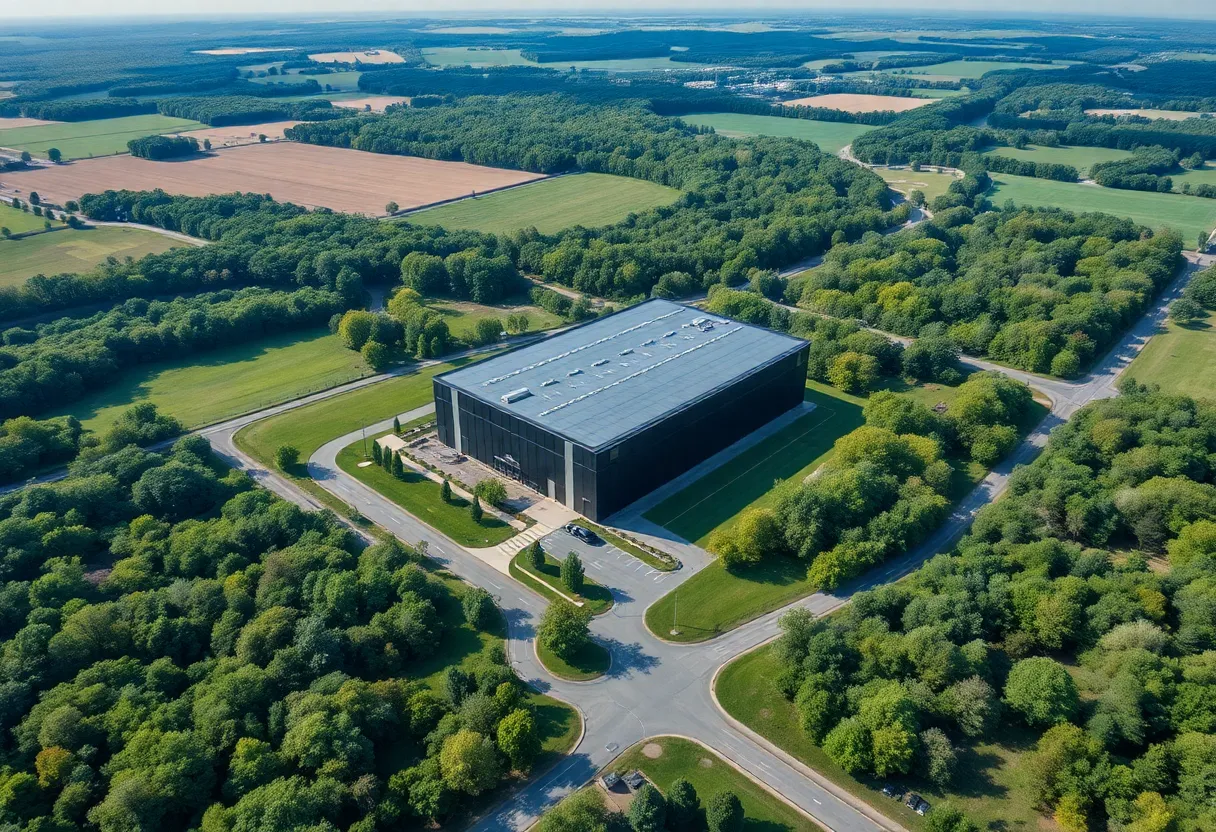News Summary
Central Ohio is experiencing significant technological growth with the establishment of data centers, igniting discussions about their economic impact and job creation. The area, formerly known for its Rust Belt status, is striving to attract major tech firms through substantial financial incentives. While the promise of job creation is present, the reality suggests limited permanent employment opportunities associated with these facilities. Tax incentives and rising costs are causing concern among local businesses, as the economic implications of this data center boom continue to unfold.
Central Ohio’s Data Center Boom: Economic Questions Arise
As technology companies flock to Columbus, Ohio, drawn by lucrative economic incentives, the region has transitioned from its Rust Belt roots to becoming a prominent tech hub. Amid this dramatic shift, concerns about job creation and the broader economic impact of Central Ohio’s burgeoning data center industry are raising questions among experts and officials alike.
Economic Incentives and Job Growth
State and local economic officials have rolled out multimillion-dollar tax subsidy packages for major tech players like Amazon, Google, Meta, and QTS, resulting in an impressive creation of approximately 150,000 jobs by 2018. However, many of these jobs are short-lived or temporary, primarily linked to the construction of data centers, which tend to employ fewer than 150 permanent staff members once operational. The short-term construction roles generally last for under a year, while tax breaks can extend for a decade or longer.
The Reality of Job Creation
While tech firms assert that their data centers support thousands of jobs—both directly and indirectly—recent analyses reveal that the actual job creation benefits from data centers may be considerably overstated. For instance, a specific deal with a Google project promised merely 20 permanent jobs in exchange for substantial tax advantages. Economists have pointed out that the cost per job associated with these data centers can reach upwards of $2 million, far exceeding the average of $262,000 associated with other economic development deals in 2023.
Electricity Consumption and Cost Concerns
In addition to questions about job growth, the expansion of data centers raises significant concerns regarding electricity consumption. Predictions suggest that data centers could account for up to 12% of the total electricity use in the United States. This surge in demand for power not only impacts the operational costs for tech firms but also creates rising electricity costs for local businesses, with companies like Walmart expressing worries that increasing energy bills could derail their expansion plans in Ohio.
Contrasting Opinions on Economic Impact
While some argue that data centers inject investment, revenue, and wages into the local economy, the uneven benefits have left local officials and residents questioning the trade-offs. Central Ohio has only nine major data centers, comparatively lacking when lined up against the 214 available in Northern Virginia. Moreover, the tax incentives provided in recent projects have led to a staggering $360 million in foregone state tax revenue since the 2022 fiscal year, all for minimal job growth.
Ongoing Projects and Future Prospects
Despite the challenges, city officials remain optimistic about the long-term advantages of these tech investments. Notable projects include Microsoft’s delayed plans for data centers in Licking County, which could potentially hinder expected job creation and influence infrastructure development agreements in the area. Currently, salaries for data center positions in Central Ohio average approximately $100,000 annually, offering lucrative opportunities for skilled workers.
Impact on the Local Economy
As competitive pressure mounts among cities vying for data center investments, aggressive incentive offerings may ultimately prove detrimental to local economies. Nonetheless, companies continue to invest heavily, with parent companies of major firms planning substantial amounts for future data center developments. In 2023 alone, these data centers reportedly generated a whopping $162.7 billion in tax revenue.
Conclusion
While Columbus seeks to cultivate a high-tech hub branded as “Silicon Heartland,” the balancing act between economic incentives, job creation, energy costs, and long-term economic sustainability raises urgent questions. As Central Ohio navigates its path in the tech landscape, stakeholders will need to reassess the impacts of its choices on job growth and overall economic health.
Deeper Dive: News & Info About This Topic
Additional Resources
- Axios: Central Ohio’s Data Center Boom
- Google Search: Central Ohio Data Centers
- Business Insider: Data Centers and Tax Subsidies in Ohio
- Wikipedia: Data Center
- ENR: Microsoft Hits Pause on Data Centers in Ohio
- Encyclopedia Britannica: Data Center
- Data Center Frontier: Cologix Data Center Pact
- Dispatch: Data Center Tax Exemption in Ohio
- Ohio Capital Journal: Proliferation of Ohio Data Centers
- Google Search: Data Centers in Ohio
Author: Construction CA News
The CALIFORNIA STAFF WRITER represents the experienced team at constructioncanews.com, your go-to source for actionable local news and information in California and beyond. Specializing in "news you can use," we cover essential topics like product reviews for personal and business needs, local business directories, politics, real estate trends, neighborhood insights, and state news affecting the area—with deep expertise drawn from years of dedicated reporting and strong community input, including local press releases and business updates. We deliver top reporting on high-value events such as the Rose Parade, Coachella, Comic-Con, and the California State Fair. Our coverage extends to key organizations like the California Building Industry Association and Associated General Contractors of California, plus leading businesses in technology and entertainment that power the local economy such as Apple and Alphabet. As part of the broader network, including constructionnynews.com, constructiontxnews.com, and constructionflnews.com, we provide comprehensive, credible insights into the dynamic landscape across multiple states.




